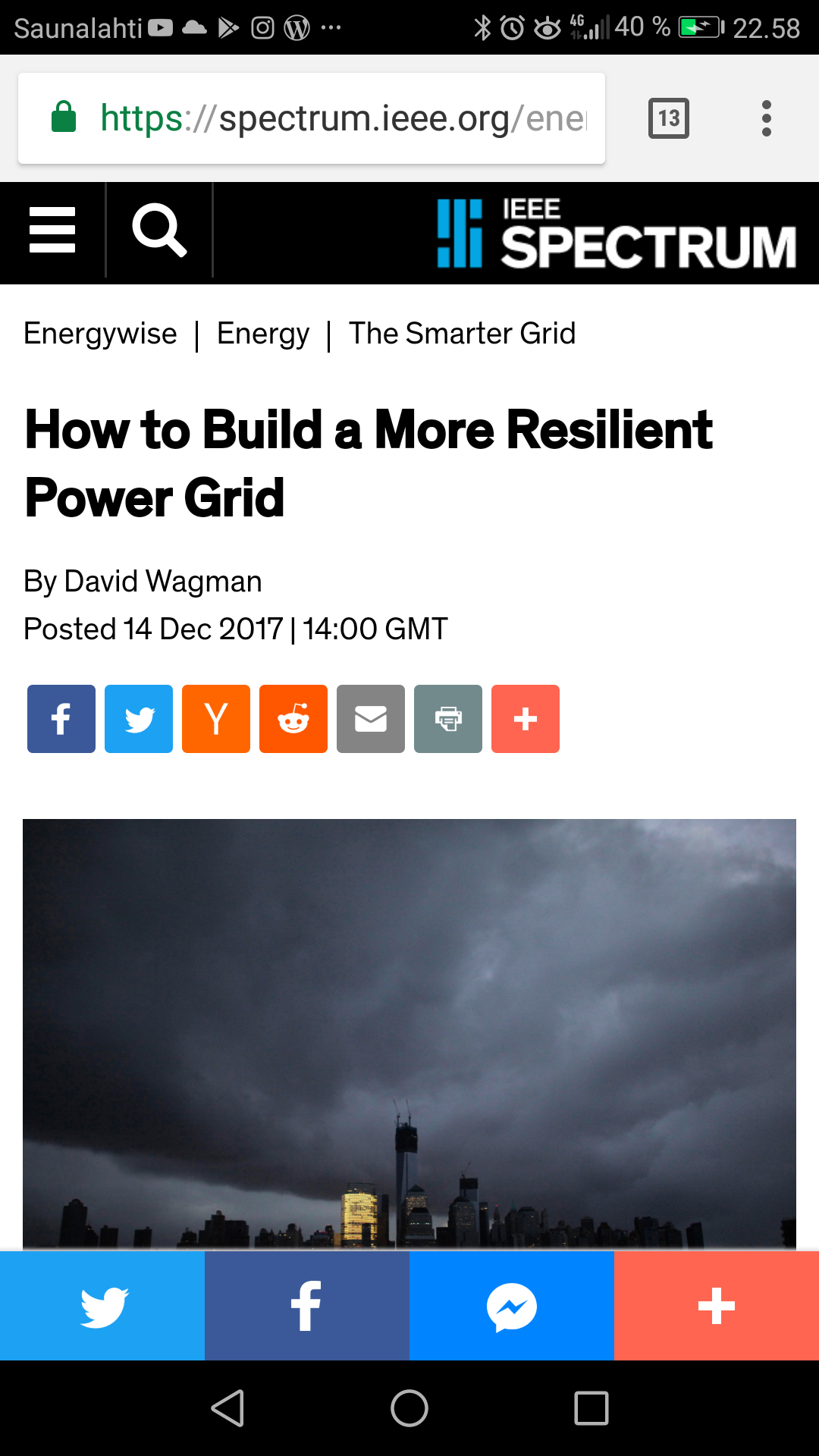North America’s electric transmission may be an engineering marvel, but that doesn’t make it immune to failure.
Efforts intended merely to harden infrastructure are not enough—the grid also needs to be resilient. Resiliency refers to characteristics of the infrastructure and operations such as strength and the ability to make a fast recovery.
Making system more resilient starts with design changes. Greater deployment of smart grid technology can also help, because automation can reduce the time it takes to restore power. Distributed generation resources and microgrids can also help.
Hardening the distribution system should focus on two objectives: hardening circuits that feed critical loads and load centers, and designing systems to allow for quick restoration.
It’s unrealistic to think that damage to the grid can be avoided when severe storms or other events occur. The goal should be to minimize any adverse impacts. The idea is to “allow the system to fail, but in such a way that it could quickly recover,”

1 Comment
Tomi Engdahl says:
Smarter Grids Pave the Way for More Open Grids
https://spectrum.ieee.org/energywise/energy/the-smarter-grid/open-smart-grids
As the sun sets across the Netherlands, streetlights twinkle on, town by town. But it’s not in lockstep: some city managers can set their lights to respond to local sunset time or a schedule of their own or they can control individual lights for local events. That’s because in 2017 those cities adopted a smart grid software-powered service built by Dutch public utility Alliander that may be the first open smart grid platform in everyday use.
Before, these cities could only operate their lights collectively because they used ripple control technology, a widespread control method that sends a pulse over the grid.
Before, these cities could only operate their lights collectively because they used ripple control technology, a widespread control method that sends a pulse over the grid. While smarter control of streetlights may be handy for cities and save them some energy and cash, Alliander has also re-used the platform to manage a growing number of additional services and, earlier this month, placed it under the umbrella of LF Energy, part of the Linux Foundation.
https://www.lfenergy.org/